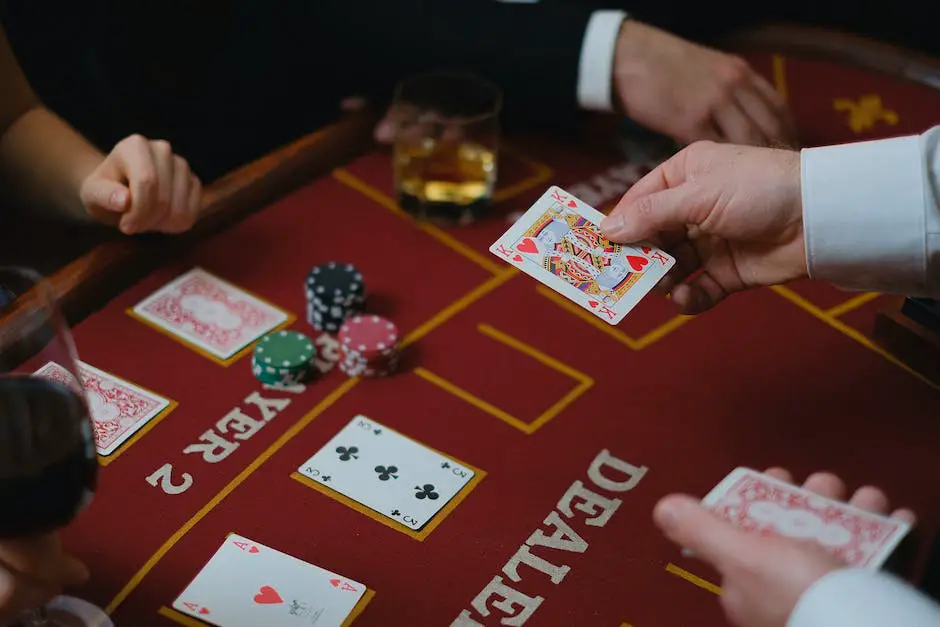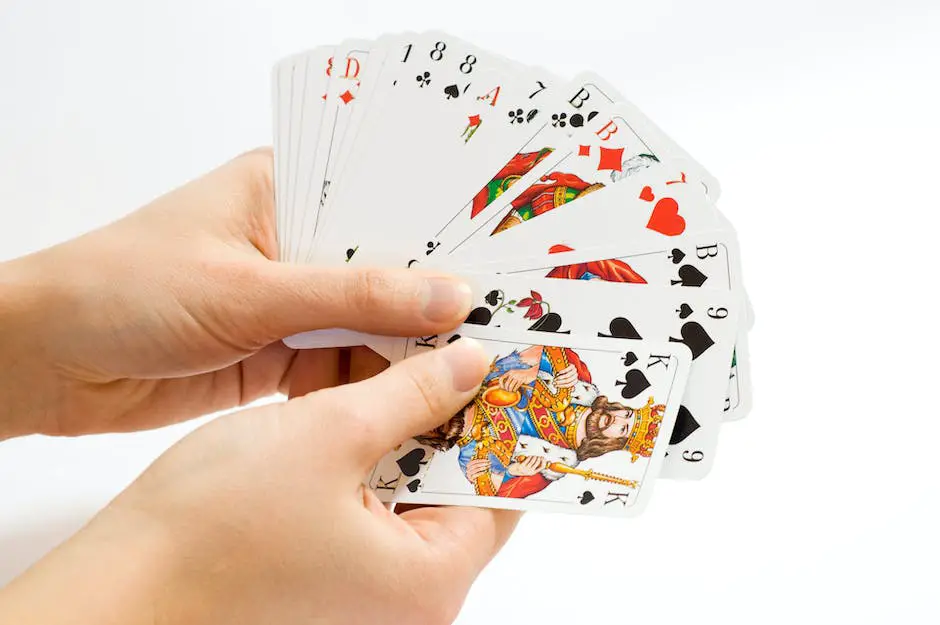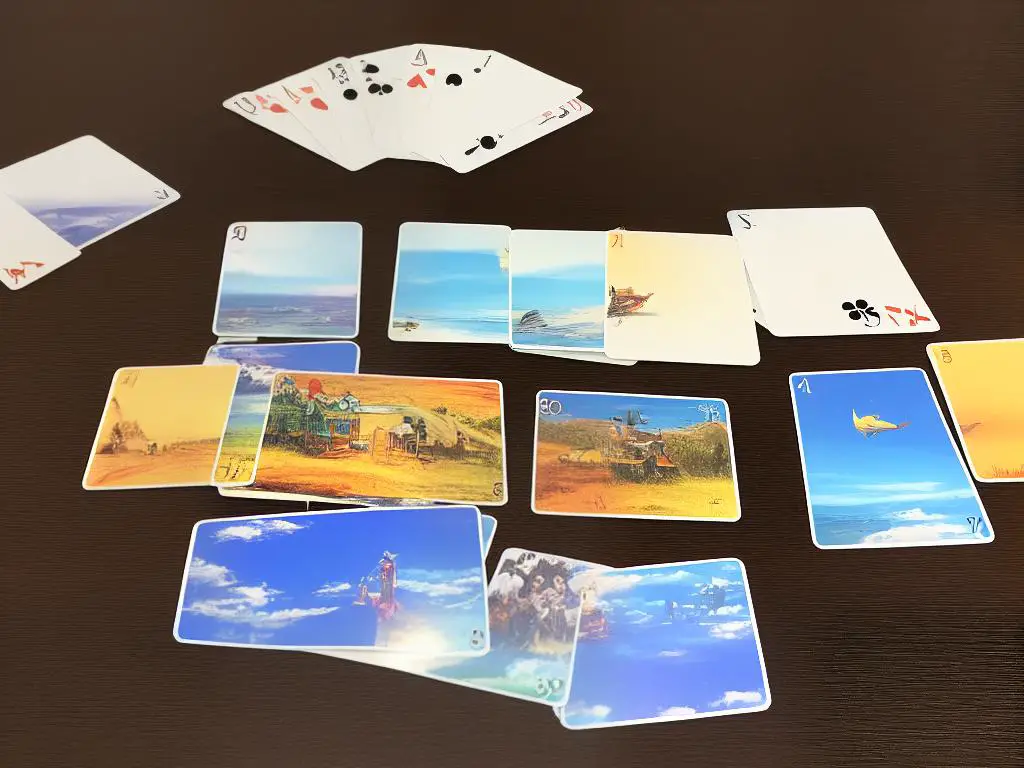Welcome to the exciting world of Sheepshead, a popular German-American trick-taking card game that is both engaging and enjoyable. Played with a 32-card deck and often involving five players, Sheepshead has a unique blend of strategy, skill, and chance. Whether you are new to card games or an experienced player looking for a different challenge, this guide will take you on a comprehensive journey through Sheepshead’s various facets, from understanding the game basics to mastering common strategies and playing with friends and family.
Understanding the game basics
Sheepshead, also known as Schafkopf, is a popular card game that originated in Germany and is now widely played across the United States. The game involves strategy, teamwork, and a bit of luck. This guide will help you comprehend the game basics, including the objective, roles, and card values in Sheepshead, allowing you to play and enjoy this unique card game with friends or family!The main objective of Sheepshead is to be the first team or player to reach a predetermined number of points – typically 61 or more – in each round consisting of 6 turns. Players achieve points by winning “tricks” containing valuable cards.In Sheepshead, there are 3-6 players, and the gameplay varies depending on the number of players involved:
– 3 players: The dealer deals 10 cards to each player; they play for themselves.
– 4 players: The dealer deals 8 cards to each player (called “Leasters”). In turn, players use partnerships, and one player plays against the other three.
– 5 players: The dealer deals 6 cards to each player and places 2 face-down in the center (called the “blind”). The picker plays against the other four players.
– 6 players: The dealer deals 6 cards to each player, and players form partnerships of 2.
The game uses a special role called the “Picker,” who teams up with another player known as the “Partner” if playing with 4 or more players. The Picker selects the Partner by choosing a specific card called the “called Ace,” depending on the round’s strategy.Sheepshead uses a 32-card deck consisting of four suits – Hearts, Diamonds, Clubs, and Spades – with eight cards per suit. The cards have a particular ranking system in terms of their values:
1. Queens (called “Ober”): 3 points
2. Jacks (called “Unter”): 2 points
3. Aces: 11 points
4. 10s: 10 points
5. Kings: 4 points
6. 9s, 8s, and 7s: 0 points
In Sheepshead, there is a unique “trump” hierarchy that goes as follows:
1. Queen of Clubs (highest trump)
2. Queen of Spades
3. Queen of Hearts
4. Queen of Diamonds
5. Jack of Clubs
6. Jack of Spades
7. Jack of Hearts
8. Jack of Diamonds
9. Ace of Diamonds (called “called Ace”)
10. Ten of Diamonds
11. King of Diamonds
12. Nine of Diamonds
13. Eight of Diamonds
14. Seven of Diamonds
Note that the trump suit’s hierarchy doesn’t change and will always follow this order, regardless of the called Ace.By grasping the game basics of Sheepshead, such as the objective, roles, and card values, you can begin learning how to play this fun and engaging game strategically. With practice, you can master these fundamental concepts and enjoy playing Sheepshead with your friends and family!

Deck and card set-up
How to Play Sheepshead Card Game: Deck and Card Setup1. Acquire a 32-card deck: Sheepshead uses a Piquet deck, which is a subset of the standard 52-card deck. You will need the following cards from each suit – Ace, King, Queen, Jack, Ten, Nine, Eight, and Seven. If you don’t have a Piquet deck, you can create one by removing the cards two through six from each suit in a standard deck.2. Understand card rankings: Sheepshead has a unique card ranking that differs from most other card games. In each suit, the cards rank as follows:
- Ace – highest-ranking card, worth 11 points
- Ten – worth 10 points
- King – worth 4 points
- Queen – worth 3 points
- Jack – worth 2 points
- Nine, Eight, Seven – these are considered “fail” cards and do not hold any point value
3. Recognize the trump cards: Sheepshead has a special order for trump cards that is essential to gameplay. The trump cards, in descending order of power, are:
- Jack of Diamonds (also known as the “Jick”)
- Jack of Clubs
- Jack of Spades
- Jack of Hearts
- Queen of Clubs
- Queen of Spades
- Queen of Hearts
- Queen of Diamonds
- King of Clubs
- King of Spades
- King of Hearts
- King of Diamonds
- Ten of Diamonds
- Ace of Diamonds
Notice that the Jacks (known as Bowers) and Queens are the highest-ranking trumps, followed by the Kings, and then the Ten and Ace of Diamonds.4. Shuffle the deck: Before each round, shuffle the 32-card deck thoroughly. Once shuffled, the dealer will distribute the cards to each player.5. Deal the cards: The dealer deals six cards to each player in packets of three. After dealing the first packet of three cards to each player, the dealer puts two cards face down in the center of the table – these cards are known as the “blind.” After putting the blind down, the dealer then distributes the second packet of three cards to each player. Each player should now have six cards, and there should be two cards in the center as the blind.6. Begin the game: The player sitting to the left of the dealer has the opportunity to pick up the blind first. Each player, in a clockwise direction, can either pass or “pick” the blind. If a player picks the blind, they become the declarer or “picker” and the game begins.

Dealing and picking cards
Sheepshead, also known as Schafkopf, is a trick-taking card game played with a custom deck of 32 cards. To become a skilled player, it is important to learn how to properly deal and pick cards in order to form partnerships and establish the trump suit. This guide will walk you through the basics of dealing and picking cards in the Sheepshead card game.Materials:- A Sheepshead deck of 32 cards (alternatively, a standard 52-card deck with cards 2 through 6 removed)Players: 3, 4, or 5 players (typically played with 5)Objective: To have the highest number of points at the end of the game.Instructions:1. Shuffle the deck: Shuffle the deck of cards thoroughly to ensure randomization of the cards.2. Deal the cards: Starting with the player to the dealer’s left, deal out the entire deck of cards clockwise. The number of cards dealt per player depends on the number of players: – For a 3-player game: Deal 10 cards to each player, and 2 cards are set aside as the “blind.” – For a 4-player game: Deal 8 cards per player. – For a 5-player game: Deal 6 cards per player, and 2 cards are set aside as the “blind.”3. Cards ranking: After dealing the cards, it is essential to understand the ranking of cards in Sheepshead, which is as follows (from highest to lowest): – Trump suits: Queens, Jacks, and Diamonds (in the order: Q♣, Q♠, Q♥, Q♦, J♣, J♠, J♥, J♦, A♦, 10♦, K♦, 9♦, 8♦, 7♦) – Non-trump suits: 10, Ace, King, 9, 8, 7 – The non-trump suits ranking applies to Clubs, Spades, and Hearts.4. Picking the blind: In a 3-player or 5-player game, the player who has the pick option can decide to “pick” the blind (i.e., the remaining 2 cards in the deck) based on their cards’ strength. The picker is aiming to form the most robust possible hand to achieve more points. To do this, the player must declare their intention to pick the blind before looking at the cards.5. Discarding: Once the picker has decided to take the blind cards, they must discard two cards from their hand—placing them face down—without showing them to other players. These discarded cards will count towards the picker’s points at the end of the hand.6. Partner selection (5-player game): The picker will form a partnership with the player who holds the called Ace if they are confident that they can work together to win the tricks. In this case, the picker must announce which Ace holder they want to partner with by declaring the specific non-trump suit (Clubs, Spades, or Hearts). The player with the called Ace becomes the picker’s partner, and their identity remains hidden until that Ace is played in a trick. If the picker doesn’t choose a partner, they’ll play solo against the other players.7. Establishing the trump suit: In Sheepshead, the trump suit is always the same (Queens, Jacks, and Diamonds) but understanding the trump suit and partnerships is crucial for succeeding in the game. Players must recognize and remember the trump cards to improve their chances of winning tricks and scoring points.With practice and attention to the dealing and picking process, players can improve their Sheepshead skills and enjoy the strategic challenge this entertaining game offers. Remember that forming partnerships and knowing the trump suit are key factors that contribute to a successful Sheepshead game. Now it’s time to gather with friends, grab a deck of cards, and put your newfound knowledge to the test!

Bidding and scoring
Sheepshead is a popular trick-taking card game played with 3 to 5 players and a standard deck of 32 cards. In order to understand the bidding process, determining the picker, and calculating scores, it is important to first understand the card suits, point values, and terminology used in the game.
Card suits and point values:
1. Trumps: These are the most powerful cards and consist of all Queens, Jacks, and Diamonds (7 – 10, Ace). Trumps are ranked as follows: Q of clubs (or the “queen trump”), Q of spades, Q of hearts, Q of diamonds, J of clubs, J of spades, J of hearts, J of diamonds, Ace of diamonds, Ten of diamonds, King of diamonds, Nine of diamonds, Eight of diamonds, and Seven of diamonds.
2. Fails: These are the non-trump cards and include clubs, spades, and hearts (7 – 10, Ace).
3. Point values: Each card is assigned a point value: Aces are worth 11 points, Tens are worth 10 points, Kings are worth 4 points, Queens are worth 3 points, Jacks are worth 2 points, and the 7, 8, and 9 cards are worth 0 points.
Bidding:
1. Each player is dealt six cards, and two cards are placed in the center of the table, known as the “blind”.
2. Beginning with the player to the left of the dealer, each player has the opportunity to “bid” or pass. To bid, a player announces a number (the minimum being 10) or “I’ll take it” to indicate they want to be the picker. This bid should be higher than any previous bids by other players.
3. The bidding continues clockwise around the table, with each player having the option to raise the bid or pass.
4. If all players pass without bidding, the dealer must pick up the blind and become the picker.
5. The highest bidder becomes the “picker” and picks up the two blind cards, then discards two of their own cards to replace the blind. The discarded cards should not be shown to the other players.
Determining the Picker and Partners:
1. After the picker has picked up and discarded the blind cards, they determine their partner. Partners are determined by the card called by the picker:
- The picker may call an Ace of a non-trump suit, making the holder of that Ace their partner.
- Alternatively, the picker may choose to play “alone” without a partner by not calling a card.
2. The picker’s goal is to win tricks containing enough points to meet or exceed their bid. The rest of the players play against the picker, trying to prevent them from achieving their bid.
Scoring:
1. After all six tricks have been played, players tally their points. The picker and their partner (if any) combine their point values.
2. If the picker (and partner) achieve their bid, they earn one point.
3. If the picker (and partner) fail to meet their bid, they lose the same number of points as their bid. For example, if the picker bid 10 and failed, they would lose 10 points.
4. The opposing players earn one point for every point the picker (and partner) were under their bid. For example, if the picker bid 10 but only took 8 points, the opposing players would each earn 2 points.
5. If the picker (and partner) win all six tricks, they “schneider” the opposing players. In this instance, the picker and partner earn an additional point, and the opposing players lose a point.
Remember to be strategic in the bidding process, taking into account the strength of your hand and any potential partners you might have. Understanding the bidding and scoring in Sheepshead is crucial to playing and enjoying the game! Happy playing!

Mastering common strategies
Mastering Common Strategies for Sheepshead Card Game
Sheepshead is a popular trick-taking card game that originated in Germany and has become quite popular in the United States as well. To increase your chances of winning, it’s essential to learn and master common strategies, tricks, and techniques.
1. Understand the card rankings and point values:
In Sheepshead, a specific hierarchy of card rankings, and certain card values should be memorized. Knowing the strength of each card and its points will help you make more informed decisions during gameplay.
- Trump Cards (Descending order): Queens of Clubs, Spades, Hearts, Diamonds; Jacks of Clubs, Spades, Hearts, Diamonds; Diamond Ace, 10, King, 9, 8, 7.
- Point Values: Aces (11 points), 10s (10 points), Kings (4 points), Queens (3 points), and Jacks (2 points).
2. Recognize the picker’s advantage:
The picker (the person who picks up the blind) has a significant advantage in Sheepshead, as they have the ability to exchange cards in their hand with the blind cards. This strategic position should be utilized to improve your hand by acquiring maximum trump cards and valuable cards.
3. Use trump cards wisely:
Since trump cards are the most powerful cards in the game, they should be used strategically. Always count on the number of trump cards played and remaining in the game. Try to preserve your high-ranking trump cards for later rounds, where they can be more effective in capturing opponent’s valuable cards.
4. Count cards and memorize cards played:
As the game progresses, it’s essential to keep track of the cards played, especially the trump cards, Aces, and 10s. This information will help you make better decisions about which cards to play and when to play them.
5. Learn when to “go alone”:
In certain situations, you might feel confident with the strength of your hand and choose to “go alone.” In this scenario, you will not have a partner, and your objective is to take all five tricks. Attempting this strategy requires a strong hand, and if successful, it can result in a big win.
6. Focus on capturing Aces and 10s:
A primary winning condition in Sheepshead revolves around obtaining points, and Aces and 10s have the highest point values. Prioritizing these cards will increase your likelihood of gaining points while preventing your opponents from scoring.
7. Communicate with your partner (in partner games):
In partner games, non-verbal communication and understanding your partner’s playstyle are crucial elements to develop. This can be achieved through observing your partner’s card choices and decisions and adapting your strategy accordingly.
8. Understand when to “schmier” or smear:
Schmiering is a technique employed when you intentionally play a high-value card to lose a trick, but your partner or the picker wins the trick, thereby securing the points for your team. Understanding the optimal time to schmier depends on your level of confidence in your partner’s ability to win the trick.
9. Learn when to “leichenschneider”:
The leichenschneider strategy involves the picker attempting to lose every trick, which will result in opponents getting negative points. This is a high-risk strategy that should be attempted only when the picker has a weak hand and is unlikely to win any tricks normally.
10. Practice and experience:
The best way to improve your gameplay and strategies is to practice and gain experience by playing numerous games. This will help you sharpen your card counting, decision-making, and understanding of gameplay intricacies.
By learning, understanding, and mastering the strategies mentioned, your proficiency in Sheepshead card game will significantly improve, thereby increasing your chances of victory.

Variations and regional rules
Variation 1: Leasters
Leasters is an interesting variation of Sheepshead that involves a scoring change from the standard game. In this variation, the player with the fewest points wins the game instead of the highest. When playing Leasters, remember to avoid scoring points and try to force other players to take in high-value cards.
Variation 2: Silent Solo
In Silent Solo, one player can become the soloist (instead of a picker and partner) and earn additional points. To play Silent Solo, the soloist must make a secret declaration. This is achieved by not announcing the partnership but secretly selecting a suited card to be played later in the game. The soloist aims to win at least 61 points during the tricks. Thus, this variation adds an element of intrigue and secrecy to the game.
Variation 3: Solo Tout
As a more advanced variant, Solo Tout elevates the stakes by requiring the soloist to win all the tricks. Before the game begins, the soloist must announce their intentions. Failure to win all tricks results in a penalty, making Solo Tout a high-risk, high-reward version of Sheepshead.
Regional Rule 1: Four-player Sheepshead (Wisconsin)
Some regions of Wisconsin have adapted Sheepshead to be played by four players using a smaller deck. In this variation, each player receives eight cards, and two are placed in the blind. Instead of picking a partner, the picker plays solo against the remaining three players. This can influence the game’s strategy and make for faster-paced gameplay.
Regional Rule 2: Doubles (Bavaria)
A popular rule in Bavarian Sheepshead allows players to double the game’s point value after seeing their hand. In cases where multiple players choose to double, the effect is cumulative (doubled, quadrupled, etc.). By allowing players the option to double points, the game becomes more dynamic and challenging.
Regional Rule 3: The Defenders Take the Blind (Minnesota)
In some regions of Minnesota, the popular rule is that the defending players, who aren’t the picker nor partner, will split the two blind cards after the game ends. These cards are added to their tricks and are included in their score.

Playing with friends and family
Step 1: Gather your players and materials.
To play Sheepshead, you will need a deck of 32 cards, or a standard 52-card deck with the 2s through 6s removed. You will also need at least five players to best enjoy the game, although variations do exist for different numbers of players.
Step 2: Understand the card rankings and point values.
In Sheepshead, the cards have a specific ranking and point value. They are ranked and valued as follows:
- Queens (also called “Obers” in traditional decks): 3 points
- Jacks (also called “Unters” in traditional decks): 2 points
- Aces: 11 points
- Tens: 10 points
- Kings: 4 points
- Nines, Eights, and Sevens: no point value
The ranking order from highest to lowest is as follows:
- Trumps: Queens, Jacks, and all Diamonds (except for the Queen and Jack)
- Non-Trump suits (Hearts, Spades, Clubs): Ace, Ten, King, 9, 8, 7
Step 3: Decide on a dealer and deal the cards.
Choose a dealer, and have them shuffle the deck. The dealer will then deal three cards to each player, followed by two cards face down in the center of the table (called the “blind”). Then the dealer gives two more cards to each player, and finally three more cards to each player. Each player should have a total of eight cards in their hand.
Step 4: Determine the Picker.
The player to the left of the dealer has the first opportunity to become the “Picker” and partner with the blind. They have the option to pick up the blind (and exchange cards with it to create the strongest hand) or pass. If they pass, the next player to the left has the opportunity. If no one picks up the blind, there are variations you can use to determine the picker, such as the dealer becoming the picker or playing an additional round of offerings.
Step 5: Begin game play.
Once the blind has been picked up and exchanged, the picker announces their trump suit, and the player to the left of the dealer leads the first trick with any card of their choice. For the remaining tricks, the winner of the previous trick leads the next one.
Step 6: Follow the rules of the game.
- Players must always follow the suit that was led (unless they don’t have any cards in that suit).
- Trumps can be played at any time, but players should only play a trump if they can’t follow suit.
- The highest card in the suit that was led or the highest trump played wins the trick.
Step 7: Calculate points and determine the winner.
Once all eight tricks have been played, each team counts the total points from the cards in the tricks they have won. The picker’s team needs to accumulate more than 60 points to win the round. If they succeed, they score a point for that round. If the picker’s team fails to get more than 60 points, the non-picker team scores points for the round. The game can continue, with the deal moving to the left and starting over with step 3.
Step 8: Keep practicing and enjoying the game.
The more you play Sheepshead with friends and family, the more comfortable you’ll become with the game. Feel free to explore variations and additional rules, found in many references, to make the game more interesting. You can also practice online against computer opponents to sharpen your skills.

By familiarizing yourself with the rules, card values, and strategies of Sheepshead, you’ll be well on your way to becoming a skilled player. Embrace the challenge of this fascinating card game, and relish the opportunity to bond with friends and family while exploring popular variations and regional rules. The more you play, the more comfortable you’ll become with Sheepshead’s unique mechanics, so gather your deck and engage in this delightful and satisfying pastime.